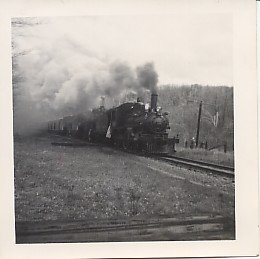I am starting a new layout, I have the info up on my website:
www.muskokacomputes.com/CVR_Home.htm
The floor plan and my attempt at deciding on a "table" configuration are in the Layout area.
I am trying to decide how best to fill the area. Locos will be 4-4-0 exclusively, rolling stock wil be at most 40' box or Overton style passenger (MDC).
My future "Ideal" layout will be a series of 30"x48" modules (either 8 or 14), that is when I can get my own house and leave this apartment.
Any suggestions are welcome.
www.muskokacomputes.com/CVR_Home.htm
The floor plan and my attempt at deciding on a "table" configuration are in the Layout area.
I am trying to decide how best to fill the area. Locos will be 4-4-0 exclusively, rolling stock wil be at most 40' box or Overton style passenger (MDC).
My future "Ideal" layout will be a series of 30"x48" modules (either 8 or 14), that is when I can get my own house and leave this apartment.
Any suggestions are welcome.





